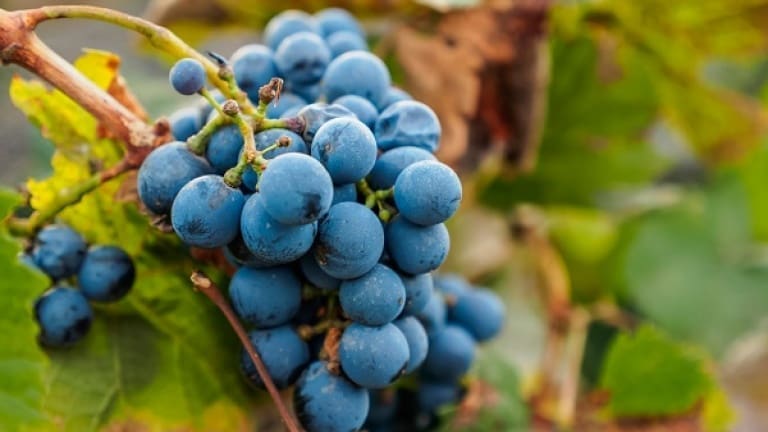Malbec Wine Guide

Malbec is a great red wine that unfortunately has been relegated to oblivion for too many years. It’s not so known, despite being an elegant, robust red wine, generous in its aromas but endowed with finesse and velvety touch that softens the impetus of tannins. It was born in France and for years, it was also a vineyard protagonist of the Bordeaux wines, where it is still expected in the production disciplinary. Still, after a sad decline and being relegated only in the area of Cahors, today it is back on the dawn thanks to the excellent climatic conditions found in Argentina, especially among the peaks of the Andes in the province of Mendoza.
If in France, where it is known as the Auxerrois, it is still used to produce rustic wines, marked by an annoying animal smell, in the hills of Mendoza, close to the Andes, it manages to express itself with elegance, intensity, deflagrating power and a fabulous softness.
All thanks to the climatic conditions of this narrow strip of land, squeezed between the Andes, on the border between Chile and Argentina. And indeed, even in Chile itself, Malbec is at home. Don’t just think that good Malbec is produced only in Argentina and Carmenere is the exclusive prerogative of Chile. This is a barbarous simplification and it is enough to take a tour in these two splendid countries to make ourselves that we have only tasted the tip of the iceberg: we are only at the beginning of the Malbec renaissance.
With 10, 15 years of rest in the cellar, they begin to taste incredible wines for aromatic depth and power and know how to caress the palate with velvety fruit.
Certainly, Malbec is a full-bodied red wine, tannic, with an imposing structure, but thanks to the incredible temperature range (the most extreme of all the wine-producing areas of the world) and to soils rich in minerals, where sand and stones mix, the fineness of perfumes, freshness and elegance are unique and can add various nuances to what is born as a solid wine.
But why is Malbec in Argentina so successful?

As mentioned before, the Andes, the altitude (which is once again a world record) and the climate (which is dry and hot during the day) prevent the onset of diseases due to humidity.
The soils tend to be dry, so the cultivation is subject to irrigation. In this way, the Argentine winemakers, especially those of Mendoza, manage to manipulate the ripening of the grapes accurately and prolong polyphenolic maturation until the last moment possible.
Malbec production areas
We talked a lot about Mendoza, but very simply because it is here that the Malbec dominates, the other Argentine wine-making areas return excellent Cabernet Sauvignon, Sangiovese, Bonarda. Still, if we talk about Malbec, we also stay in Mendoza, especially in the area of Lujan de Cuyo. Indeed, don’t expect the quality of wines in the rest of Argentina to be comparable to that of Mendoza, yes there is something interesting in Patagonia, but 70% of Argentine wine comes from this region, which offers more latitude for the vineyards and, therefore higher quality.
We also mention Cahors, located in the southwest of France, but here Malbec has no grand ambitions. And it must be said that even the clone selected in Argentina, now with two centuries of development, has changed. Even the size of the cluster has changed since it is smaller. Same family, but kinships that come loose.
Organoleptic characteristics of the Malbec wine

On the palate it is sumptuous, warm, intense, but the tannins have had the opportunity to round off and develop a thousand earthy flavours: roots, licorice, rhubarb and even a mineral finish with herbaceous traces is usually present.
But pay attention, we are talking about good quality Malbec, refined and made with quality grapes, but there are also Malbec from $ 4 per bottle in the Argentine supermarket. Or there are ready-to-drink wines all fruit with good acidity, but Malbec is a wine to invest in, choose thick bottles and let them age, the tannins deserve to rest in the cellar, it should not be drunk immediately. Like tannins and power, think of a Sagrantino, a Cabernet Sauvignon, a Primitivo, we’re not talking about a Lacrima di Morro style wine.
Malbec suggested food pairings
It is no coincidence that Malbec has emerged and defeated the competition of other international varieties in Argentina and Chile, given that in these two countries the consumption of beef, lamb and pork is sky-high. And few are wines that can compete with Malbec in terms of elegance, tannins and intensity, without ever falling into alcoholic arrogance. Combine it with all meat dishes, succulent dishes such as lamb kebabs, gnocchi with Bolognese, hamburgers, baked lasagna, truffle risotto, pasta Amatriciana.
